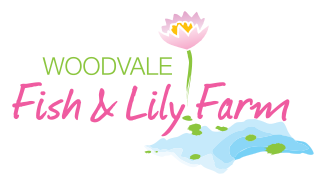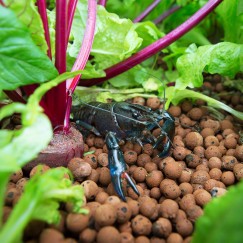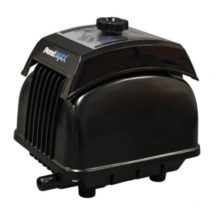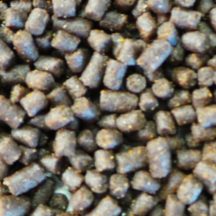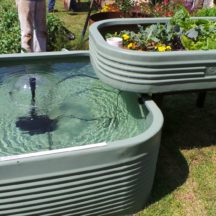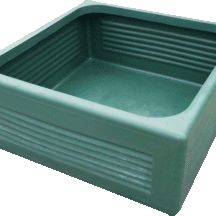Aquaponics in your Backyard – Pond to the Plate
- Your fish produce natural fertiliser and nutrients for your plants.
- Your plants consume the nutrients and filter and clean the water for your fish.
You can grow edible plants in your aquaponics pond – a wonderful array of edible waters plants are available, with many fast growing, leafy green varieties.
Starting Out
If you already have a pond or water feature in your backyard, you can incorporate edible plants simply by submerging the potted plant into your existing pond or planting into a floating basket. These plants look attractive and they add a little protection for your fish.
Adding a Spill Pond
If you would like to have a more productive supply of edible water plants, then the best way to grow them is in shallow running water, this can be achieved by adding a small spill pond, or water course/stream, you then place the plant bare rooted directly into the flowing water, the water will then flow through the plant roots and back into the pond, the added benefit of this method is that it will be constantly filtering your pond water, assisting in a clean, clear, healthy pond and maximize the plant growth.
Choosing Plants for Aquaponics
Having an abundance of leafy, super fresh leafy greens on hand all the time can be challenging in the summer months, but not for the water plants, they will thrive. As a guide if you have a square meter area of water plants, once established, you will never be able to eat enough to keep up with the growth. The best and tastiest water plants that grow really fast in shallow running water are Water Cress, Kang Kung (water spinach), Lebanese Cress, and Water Parsley all are great on both salads or stir fry’s. The production costs of these plants, other than the initial purchase, ($9 for a 13cm pot) are virtually zero, if you are using an existing pond and pump and the fish to fertilise.
Adding a Vegetable Grow Bed
Now let’s say you already have a pond, currently being filtered and a pump, fish (be it Koi, goldfish or native fish) and you would like to start growing all types of vegetables and herbs, not just water plants, then you can retro fit a vegetable grow bed to nearly any existing set up.
You will need a grow bed ( the size of your choice), flexible pipe, a retic tap, a drain or overflow, a pipe to get the water back into you main pond and some coarse growing medium to keep the plants up
Most vegetables will only root down to where the water and nutrient are, if you use a growing medium of Zeolite and Spongolite(* see below for more details) you can maximize the growth of the plants , and you will only need a very shallow depth of approx. 10cm of growing medium, ( so it will be a lot cheaper to set up to) at this point you can add an organic liquid fertilizer to the grow bed, which will in turn be absorbed by the Zeolite and Spongolite, these nutrients will be locked into the grow bed, sitting ready for the vegetables to use as and when required.
You will need to position the grow bed up a little higher than the existing pond, pump a trickle of water into the grow bed and allow gravity to drain the water back to the main pond. Again if you are using a 10cm grown bed with Zeolite and Spongolite then you can trickle the pond water to the grow bed 24hrs a day.
Rate of Production
I would say that a 1m square bed, planted with a variety of vegetable and herbs, once established will by sufficient for 2 people to be adding something fresh every day to their meals. If you have the room then adding more grow beds will course greatly extend your supply of fresh home grown vegetables, using the above method will mean that you can have as many grow beds as you wish, you won’t be increasing your power costs ( you were already running the pump before) your water usage should remain similar, and instead of having to water your vegetables and herbs daily ( as needed in the summer months) you will only have to top up the pond on your allocated watering days.
Multiple Grow Beds
The benefits of the above method is that you can have a relatively small pond say, 700-1000lts and have as many grow beds as you want all double banking on the same re-cycled pond water and the same power usage of the pump and you can be assured that all your produce is fed and well watered every day.
Adding Edible Fish
Now if all of this is of interest, the next step is to add some edible fish, silver perch, (will grow to plate size in 1.5-2years) yabbies and marron are readily available, then there is trout and barramundi, (both are seasonal and are affected by temperatures) but lots of fun and delicious.
Tips for Successful Backyard Aquaponics
A couple of quick tips if you want to go from the pond to the plate
- Never use any chemicals in your pond (except water conditioner if you use tap water) there are alternatives, so look for them.
- Never use any fish medications, it will render your pond and produce not fit for human consumption, again there are alternatives so seek professional advice should it be required.
- Use a quality fish food, there are several fish foods that are actually made in Australia and a rated for end product human consumption, they may cost only marginally more that than imported foods, but it is better for you and your country.
- Having a pump will be essential, you don’t have to spend a fortune, most have very low running costs, we will have a pump size to fit all ponds, water features, methods and budgets.
- Have a realistic approach to what you are doing, you are not going to be fishing large fish out of your pond or have a mass of vegetables overnight, good systems take time to mature and be productive, but with some effort and good planning it will happen.
- Cost can be kept to a minimum if you research and DIY, there are a myriad of different methods on how to grow fish and plants, work out which one suits you and your budget.
Producing quality, tasty, food that is fresh and where you know exactly where it comes will be a great achievement and one you are sure to enjoy.
Grow Bed Base Material
You can use a variety of materials as the base in your grow beds – we recommend Zeolite and Spongolite
